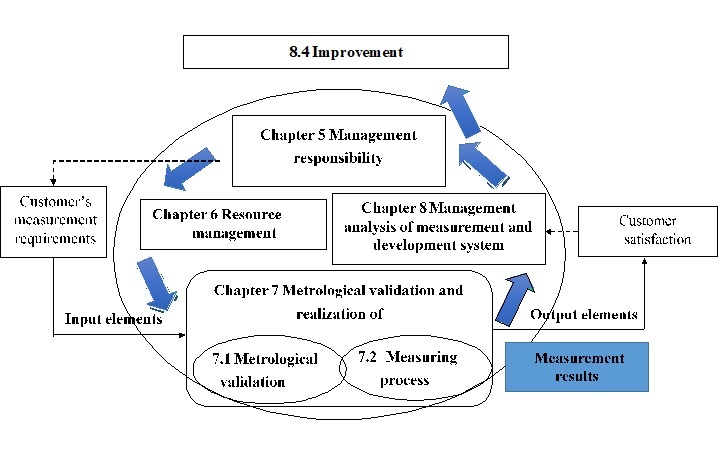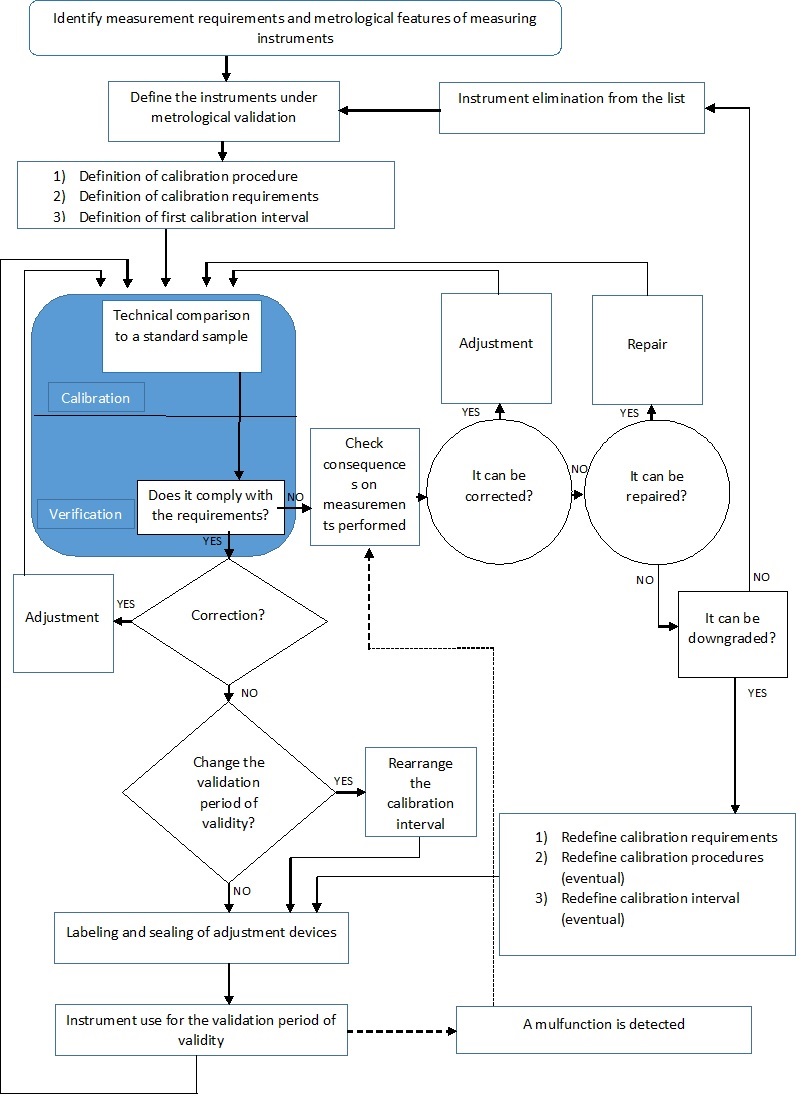Metrological validation
The UNI EN ISO 10012 normative focuses on metrological validation, defining it as follows: “Set of operations required to ensure that a measuring equipment complies with the intended use requirements." Therefore, the aim of metrological validation is to manage the risk of incorrect results that measuring instruments and measuring processes could give and consequently affect the product quality.
Model of measuring system management

Metrological validation process
By analysing the UNI EN ISO 10012 3.5 standard, we can find the following aspects:
Note 1: it specifies that metrological validation refers to any process involved in ensuring the conformity of measuring instruments and includes calibration, verification, adjustment or repair and subsequent calibration; comparison with metrological requirements for intended use, sealing and labelling required.
Note 2: metrological validation process is not complete unless the suitability of measuring instrument is demonstrated and recorded for the intended use requirements; such activities represent "metrological validation" or improperly defined "metrological confirmation".
Note 3: it specifies that the requirements for intended use include metrological characteristics, such as resolution, measuring range and maximum permissible errors.
Note 4: metrological requirements of measuring instrument used for that process must be different from product requirements; actually, metrological requirements must be more restrictive than the latter ones, to ensure that the instrument is suitable for verifying compliance of the product.
